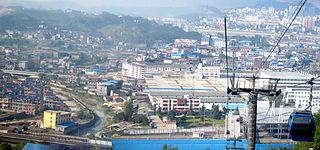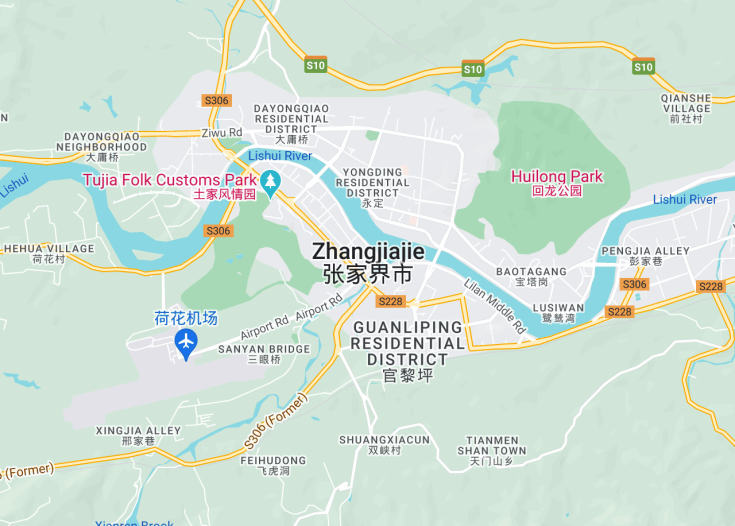Zhangjiajie, located in Hunan Province, China, is renowned for its breathtaking landscape that famously inspired the floating mountains in the film Avatar. This UNESCO World Heritage site offers a mystical vista of over 3,000 quartzite sandstone pillars, covered in lush greenery, stretching towards the sky. The area includes the Zhangjiajie National Forest Park, Tianzi Mountain, and the precarious walkways along Tianmen Mountain. Its otherworldly natural scenery attracts photographers, hikers, and nature lovers seeking to immerse themselves in its majestic, unique topography and rich biodiversity.
Plan your visit during the autumn months from September to November for the best weather and vibrant fall colors, enhancing Zhangjiajie’s natural beauty.
Wear comfortable hiking shoes and bring a good camera. The park’s vast terrain and stunning vistas are best explored on foot and worth capturing.
Top things to do & see in Zhangjiajie
Select the following sights and activities to discover best tickets and tours available in Zhangjiajie.
Zhangjiajie: Gateway to Towering Peaks
| Country | China |
| Time in Zhangjiajie | GMT+8 |
| Language spoken | Mandarin |
| Population | 1.7 million (2023 estimate) |
| Currency | Chinese Yuan (¥ / CNY) |
| Airports |
|
Zhangjiajie, located in the Hunan province of China, is renowned for its breathtaking landscape and rich cultural heritage. This city serves as the portal to the Zhangjiajie National Forest Park, part of the Wulingyuan Scenic Area, which was designated a UNESCO World Heritage Site in 1992. The area is famous for more than 3,000 narrow sandstone pillars and peaks, many over 200 meters high, which are often shrouded in mist, giving the scene a mystical appearance reminiscent of traditional Chinese paintings.
Beyond its scenic vistas, Zhangjiajie is steeped in cultural significance, with a history that dates back to the Neolithic era. The region is home to the Tujia, Miao, and Bai ethnic groups, each contributing unique traditions and festivals to the cultural mosaic of the area. One can explore ancient towns, engage with local artisans, and witness traditional folk performances, providing a deeper understanding of the indigenous cultures. Modern Zhangjiajie is not just about nature and culture; it’s also equipped with robust tourist facilities, including hotels, restaurants, and recreation areas, catering well to international tourists. The city’s vibe is a fusion of its natural beauty with a touch of modernity, making it a unique destination that offers both tranquility and adventure.
Notable attractions include the Bailong Elevator, built inside a mountain cliff, which is one of the highest outdoor elevators in the world. There is also the famous Tianmen Mountain, known for its breathtaking cable car ride – one of the longest in the world – and the glass skywalks that offer daring tourists a thrilling experience with spectacular views. Zhangjiajie’s influence extends into popular culture as well; it famously inspired the floating mountains in the blockbuster movie ‘Avatar.’ This has added to its appeal, drawing movie buffs and nature lovers alike.
Where is Zhangjiajie?
Zhangjiajie is situated in the northwestern part of Hunan province in China, surrounded by mountains and forests.
Distances:
| Route | Distance by car | Time by car |
|---|---|---|
| Changsha to Zhangjiajie | 320 km | Approx. 4 hours |
| Shanghai to Zhangjiajie | 1400 km | Approx. 15 hours |
What is Zhangjiajie famous for?
Zhangjiajie is noted for its dramatic landscape of towering sandstone pillars, which inspired the Hallelujah Mountains in the movie “Avatar”. Its breathtaking natural beauty and unique geological formations draw tourists and nature enthusiasts from all over the world.
History
Prehistoric Period – Ancient Settlements
Zhangjiajie, located in the northwestern part of Hunan province, China, boasts a rich history that stretches back thousands of years. Archaeological findings suggest that early humans, specifically the predecessors of the Tujia people, one of the ethnic minorities in China, inhabited this area as early as the Paleolithic age. These early inhabitants were primarily hunters and gatherers who made use of the abundant natural resources provided by the lush landscapes and towering mountains of the region.
221 BC-AD 1911 – Dynastic Influences and Developments
During the Qin Dynasty, the area now known as Zhangjiajie came under the influence of imperial control as part of the expansion of the Chinese empire. Throughout the subsequent dynasties, including the Han, Tang, and Ming dynasties, Zhangjiajie remained a strategic military and cultural outpost. The region saw the construction of numerous temples and the development of local customs and folklore, deeply influenced by Taoist and Buddhist practices. The mountainous terrain also served as a natural barrier, protecting the area from external invasions and preserving its unique cultural identity.
1912-1949 – The Republic Era and Modernization
With the fall of the Qing Dynasty and the establishment of the Republic of China, Zhangjiajie began to modernize. However, it remained relatively isolated due to its geographic location. It wasn’t until the Communist victory in 1949 and the establishment of the People’s Republic of China that significant infrastructural developments were initiated. Roads, schools, and hospitals were built, significantly improving the standard of living for the local population.
1980-Present – Opening Up and Tourism Development
The area’s significant transformation began in the 1980s when the Chinese government recognized the potential of Zhangjiajie’s breathtaking natural scenery. In 1982, Zhangjiajie was designated as China’s first national forest park. This marked the beginning of its development into a major tourist destination. The UNESCO World Heritage designation of Wulingyuan Scenic Area in 1992 further boosted Zhangjiajie’s international profile. Today, with its towering sandstone pillars, deep ravines, and pristine waters, Zhangjiajie attracts millions of tourists from around the globe, seeking to experience its natural wonders and cultural heritage.
Visit Zhangjiajie
What to see and do in Zhangjiajie, China.
Visitors to Zhangjiajie, China, are greeted with a landscape that seems to defy the laws of nature. The region is most famous for its towering sandstone pillars, many of which are over 200 meters high and served as inspiration for the floating mountains in the movie “Avatar.”
- Explore the Zhangjiajie National Forest Park to see these incredible formations up close.
- Take a cable car ride to the top of Tianmen Mountain and walk across the breathtaking glass bridge.
- Visit the Yellow Dragon Cave, one of the largest and most beautiful karst caves in China.
- Hike through the stunning scenery of Wulingyuan Scenic Area.
- Experience the cultural performances by local Tujia and Miao communities.
Festivals and Events in Zhangjiajie
Zhangjiajie hosts several cultural and nature-focused events throughout the year, enhancing the visit experience. The Zhangjiajie International Country Music Week, usually held in September, is a popular event featuring musicians from across the globe. Another significant event is the Wulingyuan Snow Festival, where visitors can enjoy the winter wonderland scene of the sandstone pillars covered in snow during December and January.
Best time to visit Zhangjiajie
The best time to visit Zhangjiajie is during the spring (April to June) and fall (September to November) months. During these periods, the weather is mild, and the natural scenery is at its most vibrant, offering spectacular views of the sandstone pillars emerging from a sea of clouds, especially after a rain.
Is Zhangjiajie worth visiting?
Zhangjiajie is undoubtedly worth visiting for anyone eager to witness one of China’s most unusual and visually stunning natural landscapes. The surreal beauty of its towering pillars, unique rock formations, and verdant forests offer not only a feast for the eyes but also a haven for outdoor activities like hiking and photography. The region’s rich cultural heritage adds an additional layer of depth to any visit, making Zhangjiajie a compelling destination for both nature lovers and cultural enthusiasts alike.










